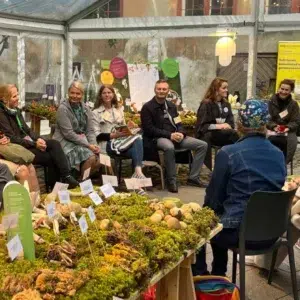It is known that Chaga (Inonotus obliquus) is an immune system balancer and a powerful antioxidant that supports the intestinal microflora and promotes the natural functioning of the body’s physiological processes. Chaga, also known as the King of Mushrooms, has been prominent in many uses for millennia, from the culture of the ancient Finno-Ugric tribes to the American Indian and Siberian tribes.
Chaga’s antioxidant properties have been supported by various scientific studies. Chaga contains antioxidants, including polyphenols, which have been shown to protect against free radical damage in human cells. A wide spectrum of biological activity is also related to melanins, which effectively inhibit the peroxidation of polyunsaturated fatty acids and prevent DNA single chain breakage, membrane damage and protein oxidation.
Animal studies have found that Chaga has an anti-inflammatory effect and can help reduce inflammation in the human body as well. Melanins can accelerate the rate of wound healing and have immunomodulatory, anti-inflammatory and anti-tumor properties with low toxicity. Chaga has been found to lower cholesterol and blood pressure, which can help improve cardiovascular health.
Chaga mushrooms have been shown to strengthen the immune system by increasing the activity of immune system cells such as white blood cells. Polysaccharides extracted from Chaga have shown several bioactivities. Chaga is rich in β-glucan polysaccharides with a lower molecular weight, which contributes to their absorption and activity.
Some laboratory studies have found that Chaga can help inhibit the growth of cancer cells, but more research is needed to determine its effectiveness in humans. Ethanol extract has been shown to exert a strong superoxide dismutase-like effect on DLD-1 tumor cells, slowing their growth, and exposure to chaga ethanol extract caused apoptosis, or tumor cell death.
Why grow chaga?
First keyword is “profitability”. We like to think that medicinal mushroom cultivation will become a part of normal forest management in the future. Cultivation of chaga creates an opportunity to earn a new kind of income and also to reduce costs related to land tax. In addition, mushroom cultivation helps to value the Estonian forest without cutting it down. In this way, the forest owner contributes to maintaining the ecological balance and reducing the harmful environmental impact. Third, growing chaga supports investment in human health. It has been proven that chaga elixirs support the immune system and reduce inflammatory processes in our body. Estonia’s forests and clean natural environment offer excellent conditions for growing and harvesting the quality raw materials required for the production of a valuable elixir.
How is chaga grown?
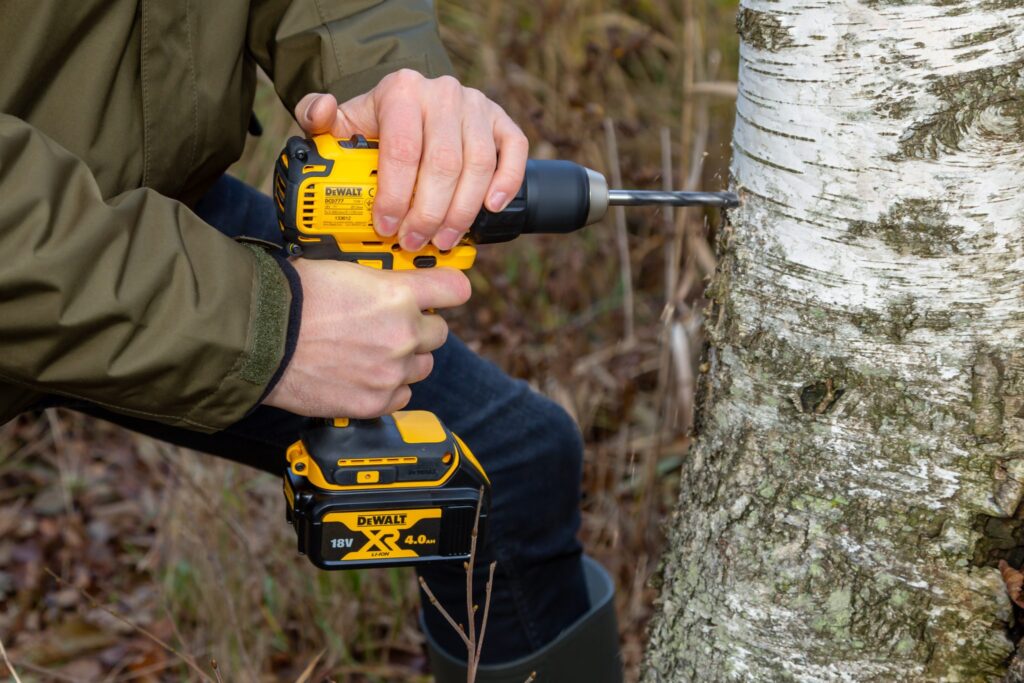
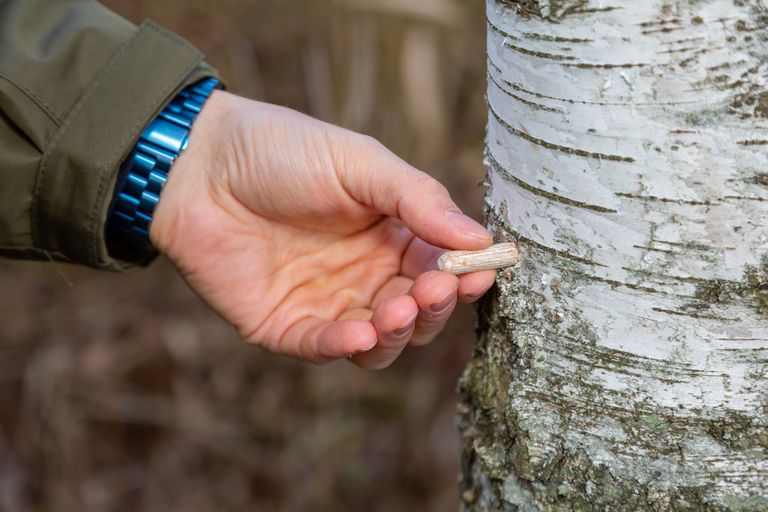
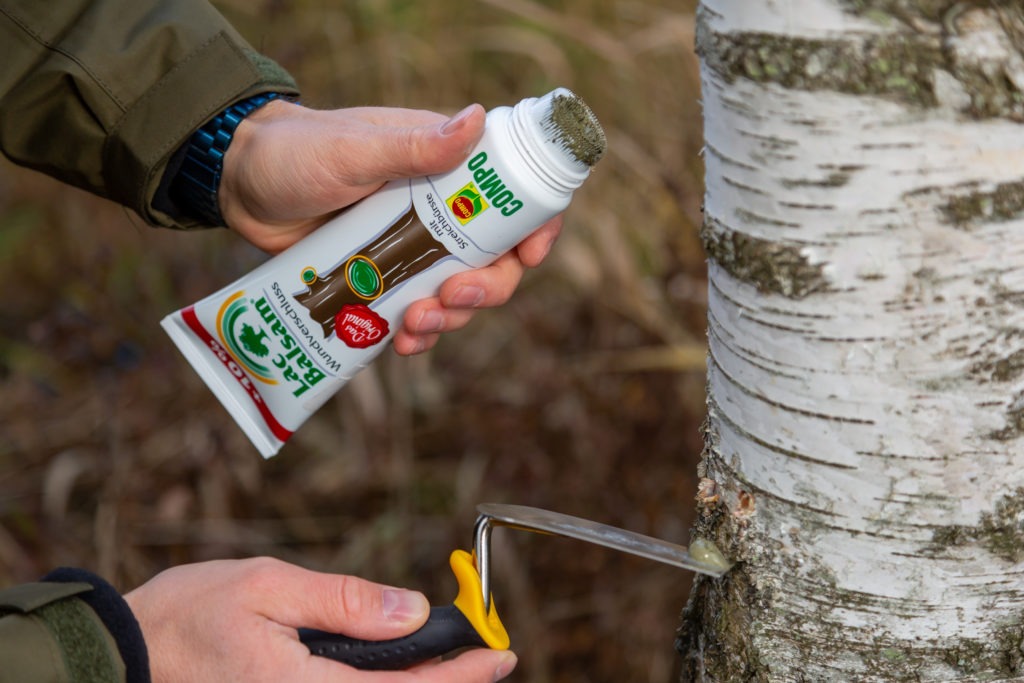
Since chaga grows on birch trees, minimum 5 acres of forest is first needed to establish chaga cultivation. Swampy areas are also suitable for this. Chaga can be grown on birch trees at least 10 years old with a minimum diameter of 4 inches.
Chaga is “planted” on a tree using wooden dowels carrying chaga mycelium. The dowels are made by propagating a mushroom in the top mushroom laboratory of our partner Mycelia in Belgium. The Mycelia laboratory was founded in 1985 by mycologist Magda Verfaillie, and its main activities are the production of mycelia, research and development. In the laboratory, chaga is grown and propagated on wooden dowels, ready for planting.
To grow chaga, chaga dowels are planted in 2 inch deep planting holes drilled into a birch tree. 5 chaga dowels are made to grow on one birch tree at the same time. Holes are drilled and dowels are planted up to 26.5 feet high. Birch trees can be harvested three times every 7-8 years, after which it is still possible to realize the trees for paper or firewood.

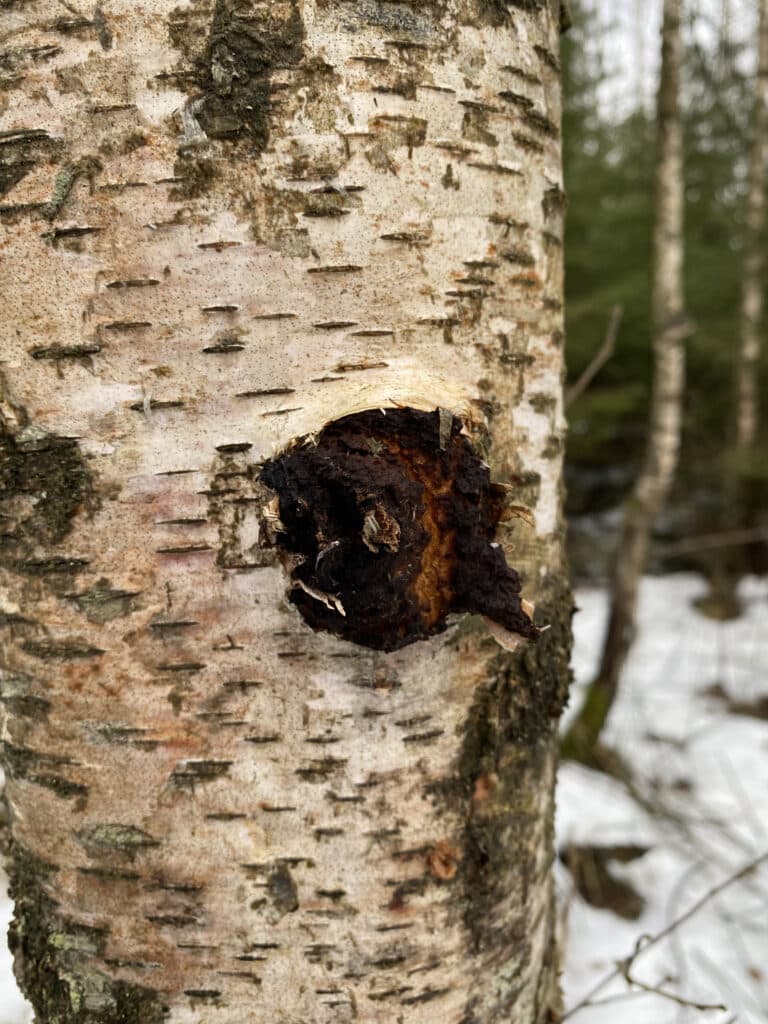
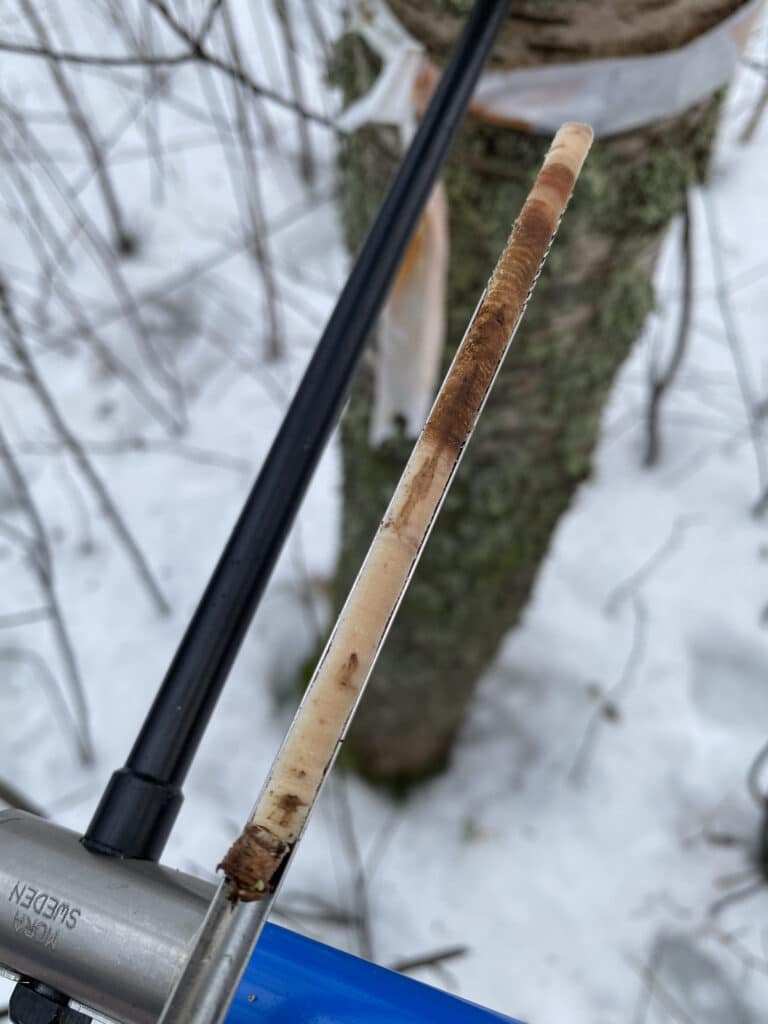
How profitable is Chaga cultivation?
We ofer additional assurance to fores owners paricipating in Chaga cultivation project by committing to buy back all the harvesed mushrooms. Based on cultivation models, the net yield per 1 acre of birch fores should equal around $450 annually over a period of 20 years. Over this period, the average fores productivity is around $9000. Calculation is based on the following data:
- 1 acre = ~160 birch trees
- 160 birch trees = ~800 Chaga dowels (5 dowels per tree)
- 800 Chaga dowels = ~600 lbs of wet harves every 7-10 years
- 3 harvess over 20 years = ~1,800 lbs of wet harves
- 1,800 lbs of harves (5 dowels per tree) = ~$9,000
- invesment per acre (800 dowels) = ~$2,400
- yearly average ROI 18.36%
The calculation is based on a repurchase price of ~$5/lb (minimum guaranteed pricing). The actual price depends on the market value at the given time, which, due to increasing demand and scarcity of Chaga, has been trending upward.
Why Shroomwell needs Chaga?
Due to the need to ensure the availability of raw materials for Shroomwell’s elixirs, powders, and potentially other wellness, beauty and spors products in the future, Shroomwell began esablishing Chaga cultivations and selling Chaga dowels to trused parners in 2019. This was the only way to meet the growing demand for raw materials, meet the needs for our production and ensure a trused source of these remarkable functional mushrooms. 10-year market outlook for Chaga and other medicinal mushrooms is emerging and suppors the need for such cultivation.






